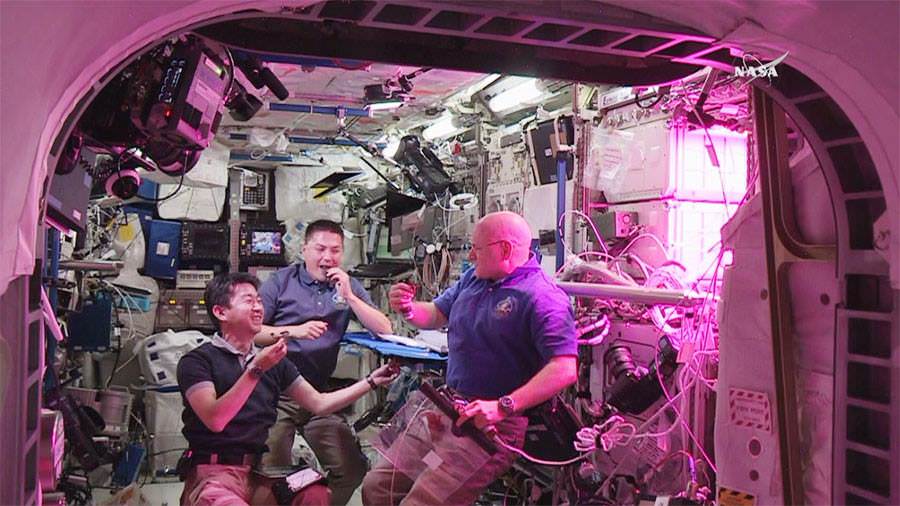There are no clear plans for a manned flight to Mars, but we all know it’s coming. Astronauts regularly spend months at a time on the ISS, and we’ve learned a lot about the dangers they face on long-duration missions. But Mars missions can take years and pose many challenges, including astronaut nutrition.
Nutrition helps astronauts manage the risks of spaceflight while on the ISS, but it’s different on a long-duration mission to Mars. There can be no resupply.
From a physiological perspective, low gravity and radiation exposure are two chronic hazards that astronauts face on the ISS. Low gravity can lead to muscle loss and decreased bone density, and radiation exposure increases the risk of developing cancer and other degenerative diseases. When astronauts travel to Mars, each trip takes six to seven months, and they may stay on Mars for up to 500 days.
This dwarfs the eight days the Apollo 11 astronauts spent in space. These long journeys put a strain on astronauts’ health, so NASA is working to understand what role nutrition can play in maintaining astronaut health and managing risk.
Their current research on astronaut nutrition is available for free. PDF book titled “Human adaptation to spaceflight: The role of food and nutrition – 2nd edition” All four authors are researchers active in the following fields: Nutrition, biochemistry, biomedical research, space food systems, and preventive health.
“The importance of nutrition in exploration has been documented repeatedly throughout history, including on ocean voyages, expeditions across polar ice, and treks across unexplored continents,” the authors write.
Scientists have learned a lot about nutrition since the age of seafaring and exploration, but the authors note that “a major difference between past journeys and space exploration is that astronauts are less likely to find food along the way.” ” he wrote. This means that understanding the nutritional and food system requirements of astronauts on long journeys is “as important to crew safety and mission success as the mechanical systems of the spacecraft itself.” .
This book examines the unique challenges astronauts face and presents data from multiple studies that parallel those challenges. For example, nutritional research in Antarctica has replicated the loneliness and lack of sunlight that astronauts face on long-duration missions, and resting in bed with your head tilted downwards is a muscular challenge that astronauts must endure. It reproduces the non-use of case systems.
Astronauts face numerous health risks during long-duration spaceflights. The most well-known risks are radiation exposure and its cancer risk, and microgravity and its effects on muscles and bones. But there are other risks that are less well known.
Astronauts can suffer from neuro-ocular syndrome. immune system It may weaken intestinal biota It can be changed. All of these symptoms are related to nutrition. Scientists don’t fully understand how everything works, but it’s clear that nutrition plays a role. This book provides an overview of the types of research currently being conducted and the current understanding. However, the authors are clear that a system that provides adequate nutrition for astronauts must function.
ISS astronauts, excluding Russians, receive a portion of their meals in Crew Special Menu (CSM) containers, which each astronaut orders. They provide 10% to 20% of the food. You will also receive a small amount of fresh food or food with a limited shelf life on each resupply mission. This has increased the variety of astronauts’ diets and helped provide nutritional support, but astronauts still say they want more CSM and fresh food.
Here in developed countries on earth, it is very easy to meet our nutritional needs. Most of us have access to supermarkets and farmers markets where we can buy fresh produce and other healthy foods. The same breed does not exist in the universe. Astronauts on the ISS conducted some experimental “farming” and successfully grew several edible plants, including lettuce, kale, and cabbage. However, we are far from growing enough food to support our nutrition. This is especially true for Mars missions, where space and payload are extremely important.


One obvious question regarding astronaut nutrition is whether supplements can replace nutritious foods. The authors present evidence that refutes that idea. “Many previous studies have shown that the complex synergistic effects produced by whole foods cannot be replicated by supplements,” the researchers wrote. In fact, supplements can be dangerous in some cases. “Recent studies also found that supplementing with certain antioxidants, such as vitamin E and vitamin A, may increase the risk of cancer and all-cause mortality,” the authors explain.
The needs of a space food system go beyond nutrition. There are also social benefits and welfare benefits. Knowing that a variety of healthy foods are available also boosts morale. Being able to share and exchange expensive food items with fellow astronauts creates friendships and a desire to collaborate. Think about sharing a meal with friends and family and all the social connections it provides.
According to the authors, there is currently no solution to the nutritional hurdles on Mars missions. In fact, currently no system exists designed to provide astronauts with the nutrition they need for long-duration spaceflights. “Currently, no food system exists that can address the nutritional, acceptability, safety, and resource challenges of long-term exploration missions, such as Mars exploration missions,” the authors write.
But researchers say it’s important to develop it. Without it, long-duration missions and their astronaut crews will suffer and likely face catastrophic failure.
“A space food system developed and delivered to provide all defined nutritional requirements should be available on all human missions as an essential countermeasure against poor health and performance,” the authors write. .

